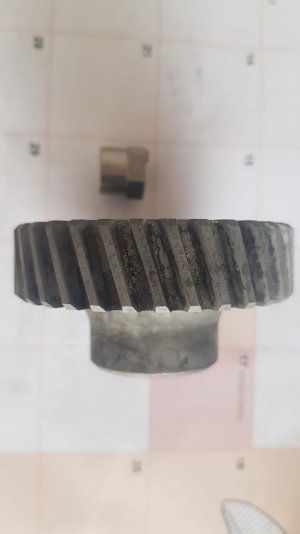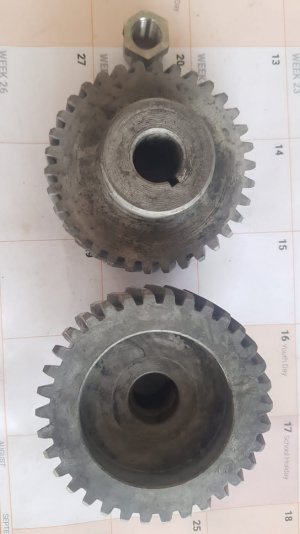- Joined
- Sep 29, 2017
- Messages
- 2,251
Hallo all.
I made some spur gears in the past,but I need some help with formulas for making hellical gears. Also calculating helix lead of the gear and for the dividing head gear ratio. I may short some gears and parts for my universal DH which I scored at the scrap yard,here is that link if you are interested.
Best find of the month, year decade....
I dont have the gears in hand yet so I can't give diamentions except for tooth count which looks like 34T. The customer sent the pics for me to have a look at.


Any advice is welcome,because like I said it will be my first hellical gears. I will be doing some homework in the meantime,but there is thing like too much information.
Thanks for viewing.
Michael.
I made some spur gears in the past,but I need some help with formulas for making hellical gears. Also calculating helix lead of the gear and for the dividing head gear ratio. I may short some gears and parts for my universal DH which I scored at the scrap yard,here is that link if you are interested.
Best find of the month, year decade....
I dont have the gears in hand yet so I can't give diamentions except for tooth count which looks like 34T. The customer sent the pics for me to have a look at.


Any advice is welcome,because like I said it will be my first hellical gears. I will be doing some homework in the meantime,but there is thing like too much information.
Thanks for viewing.
Michael.

